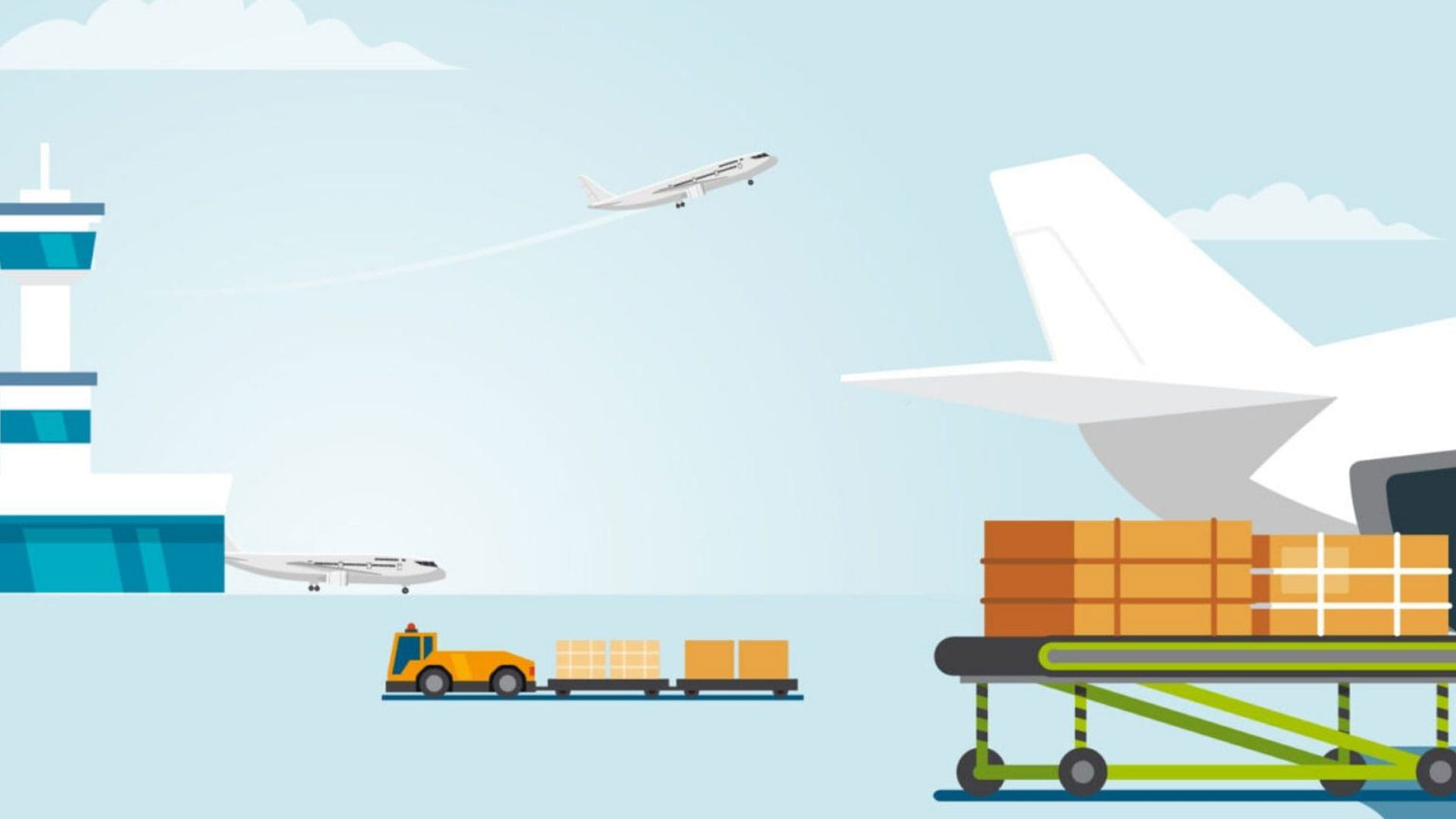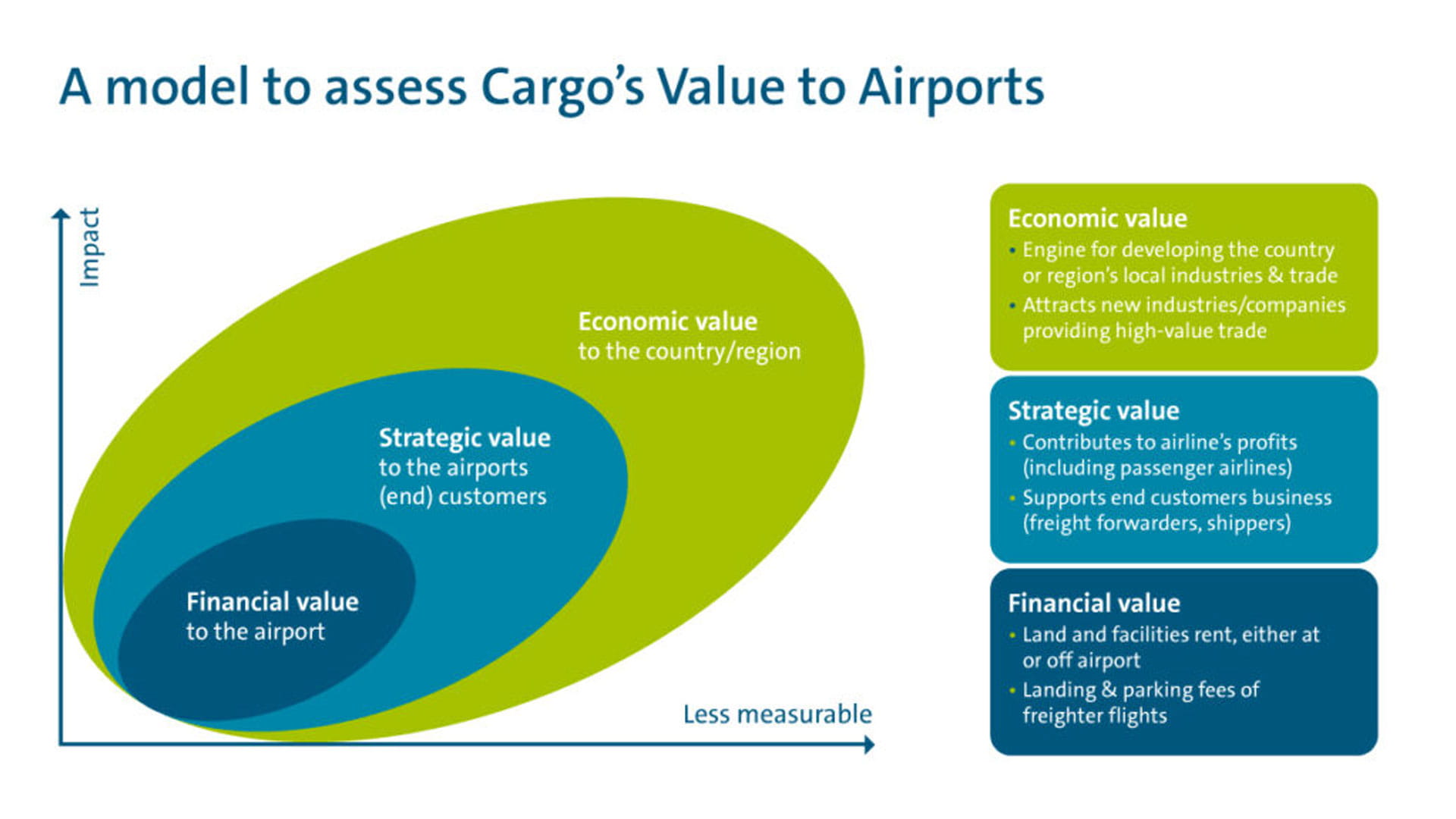How Air Cargo Adds Value to Airports

However, some airports have made the conscious decision to invest in cargo development over time; a strategy that has enabled operators to mitigate losses this year. In the words of one our airport clients, “…cargo has kept the lights on.” during the pandemic.
Cargo demand shows a degree of resilience to the crisis and is benefitting from intensified e-commerce activity. This stands in sharp contrast to the uncertain recovery path of passenger travel demand, and raises the question – what is the value of air cargo for airports? And thus, how can airports develop their cargo business?
A Model to Assess Cargo’s Value
Financial Value
Historically, air cargo has been estimated to represent, on average, less than 10% of airports’ total revenue. This figure includes aeronautical revenue from freighter movements as well as from the rental of land and facilities. These facilities are located either at the airport (ground handling terminals and freight forwarder warehouse) or off-site (logistics park). Such revenue also includes handling fees when the airport operator is engaged in cargo ground handling.Strategic Value
Air cargo largely contributes to the success of many stakeholders at or around the airport, including its customers: airlines. IATA projects that air freight will represent 26% of this year’s airline revenue, an increase from 12% in 2019. In other words, cargo has become increasingly important to airlines and will continue to play a considerable role throughout the recovery. Whether they are “cargo-only” or primarily passenger focused, airlines value cargo’s contribution to their bottom line. Even pre-pandemic, belly cargo could determine the difference between loss-making and profitable flights on some long-haul routes. Similarly, freight forwarders benefit from operating at strong cargo airports where they are able to consolidate demand from multiple shippers and make use of the various air capacity options available at the airport.Economic Value
Air cargo is an important enabler of global trade and an engine for local, regional and national economic development. This translates into employment opportunities created across various industries that rely on import/export activity. Naturally, this effect is more complex to accurately quantify given how interwoven air cargo is with a country’s economic fabric. What is clear however, is that it depends largely on the airport’s position within global trade routes and its role in supporting local industries.
Maximising Cargo Opportunities for Airports
Not all airports benefit evenly from cargo development. Cargo traffic requires a combination of multiple factors to grow, namely: strong connectivity, robust infrastructure and quality processes. Connectivity is among the most important of factors – the availability and quality of air cargo capacity is central to the airport’s role as a cargo gateway or hub. Leading cargo airports boast wide network coverage with diverse options of airlines and capacity types (freighter and bellyhold).The quality of the infrastructure similarly plays a significant role in attracting cargo traffic, as sufficient capacity is required to minimise ground handling-related delays. This means that those airports that have up-to-date cargo terminals are in a better position to compete. In recent years, several cargo press reports have highlighted issues with airport infrastructure being ill-suited to modern cargo requirements, citing examples in the U.S. market in particular. In addition, availability of special handling facilities, especially for the cold chain, is an essential factor in attracting perishables and pharmaceuticals cargo traffic. This requirement will take on greater significance with the imminent need to distribute COVID-19 vaccines worldwide and under strict temperature-control requirements.
Other factors that lie outside of the airport’s scope of control, can strongly determine the airport’s cargo prospects. Ground infrastructure is critical in extending the airport’s catchment area to further inland markets and in increasing its competitive potential. In addition, the quality of customs processes can heavily impact throughput times, distinguishing strong cargo airports from the rest.
These factors, alongside many others, further define how airports can successfully develop and stimulate cargo. Many relate to infrastructure development, process improvement or areas such as regulation which lie outside the airport’s control. Added to this, the intricate nature of the cargo supply chain also means that many stakeholders need to work together to effect change. Consequently, these large scale and complex developments tend to occur over extended periods of time.
From Cargo Airport to Cargo Ecosystem
While some airports have a deliberate strategy for cargo development, this is not the case for all. In fact, many airports carry outdated cargo plans. This is understandable, given that the financial value generated for the airport can be limited; however, the value to its customers and stakeholders can be considerable.
The airports that are successful in their cargo strategies, are inevitably those that are comfortable with addressing the sector’s strategic value by proactively engaging with their stakeholders. These airports go beyond their own perimeters and ask the question, “what is the value to the cargo ecosystem?”. They work closely with local industry representatives and government agencies to enable the country’s vision for air trade. It is this degree of collaboration that can translate into funding for the renewal of facilities, the relaxation of regulations to facilitate trade, or joint marketing efforts to promote the local cargo ecosystem.
Moving forward, many cargo and logistics players will seek the airport’s support in leading them through the ongoing recovery. Airports will continue to play a central role in future cargo developments, as they do in many other processes; unlocking benefits for the entire ecosystem by taking the role of the flagbearer and bringing together multiple stakeholders towards a single aim. Often, the value generated is spread across the local cargo community and sometimes, as in the case of COVID-19 vaccine distribution, the value is beyond measure.